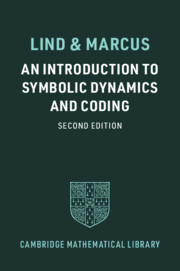Refine search
Actions for selected content:
48533 results in Computer Science
Trusts, co-ops, and crowd workers: Could we include crowd data workers as stakeholders in data trust design?
-
- Journal:
- Data & Policy / Volume 2 / 2020
- Published online by Cambridge University Press:
- 22 December 2020, e20
-
- Article
-
- You have access
- Open access
- HTML
- Export citation
WHAT IS A RULE OF INFERENCE?
- Part of
-
- Journal:
- The Review of Symbolic Logic / Volume 14 / Issue 2 / June 2021
- Published online by Cambridge University Press:
- 21 December 2020, pp. 307-346
- Print publication:
- June 2021
-
- Article
- Export citation
BINARY KRIPKE SEMANTICS FOR A STRONG LOGIC FOR NAIVE TRUTH
- Part of
-
- Journal:
- The Review of Symbolic Logic / Volume 15 / Issue 3 / September 2022
- Published online by Cambridge University Press:
- 21 December 2020, pp. 668-692
- Print publication:
- September 2022
-
- Article
- Export citation
CLOUD STORAGE FACILITY AS A FLUID QUEUE CONTROLLED BY MARKOVIAN QUEUE
-
- Journal:
- Probability in the Engineering and Informational Sciences / Volume 36 / Issue 2 / April 2022
- Published online by Cambridge University Press:
- 21 December 2020, pp. 237-253
-
- Article
- Export citation

An Introduction to Symbolic Dynamics and Coding
-
- Published online:
- 19 December 2020
- Print publication:
- 21 January 2021
Motion Adaptation Based on Learning the Manifold of Task and Dynamic Movement Primitive Parameters
-
- Article
-
- You have access
- Open access
- Export citation
AIE volume 34 issue 4 Cover and Front matter
-
- Article
-
- You have access
- Export citation
Cycle partitions of regular graphs
- Part of
-
- Journal:
- Combinatorics, Probability and Computing / Volume 30 / Issue 4 / July 2021
- Published online by Cambridge University Press:
- 18 December 2020, pp. 526-549
-
- Article
- Export citation
AIE volume 34 issue 4 Cover and Back matter
-
- Article
-
- You have access
- Export citation
Dynamic game semantics
-
- Journal:
- Mathematical Structures in Computer Science / Volume 30 / Issue 8 / September 2020
- Published online by Cambridge University Press:
- 18 December 2020, pp. 892-951
-
- Article
- Export citation

Beyond the Worst-Case Analysis of Algorithms
-
- Published online:
- 17 December 2020
- Print publication:
- 14 January 2021
11 - A Dialogical Account of Proofs in Mathematical Practice
- from Part III - Deduction and Cognition
-
- Book:
- The Dialogical Roots of Deduction
- Published online:
- 10 December 2020
- Print publication:
- 17 December 2020, pp 205-233
-
- Chapter
- Export citation
8 - Shortest Paths
-
- Book:
- Competitive Programming in Python
- Published online:
- 03 December 2020
- Print publication:
- 17 December 2020, pp 124-137
-
- Chapter
- Export citation
15 - Exhaustive Search
-
- Book:
- Competitive Programming in Python
- Published online:
- 03 December 2020
- Print publication:
- 17 December 2020, pp 227-244
-
- Chapter
- Export citation
Conclusions
- from Part III - Deduction and Cognition
-
- Book:
- The Dialogical Roots of Deduction
- Published online:
- 10 December 2020
- Print publication:
- 17 December 2020, pp 234-237
-
- Chapter
- Export citation
10 - Trees
-
- Book:
- Competitive Programming in Python
- Published online:
- 03 December 2020
- Print publication:
- 17 December 2020, pp 171-181
-
- Chapter
- Export citation
Debugging tool
-
- Book:
- Competitive Programming in Python
- Published online:
- 03 December 2020
- Print publication:
- 17 December 2020, pp 247-247
-
- Chapter
- Export citation
The effect of hemicylindrical disruptors on the cell free layer thickness in animal blood flows inside microchannels
-
- Journal:
- Experimental Results / Volume 1 / 2020
- Published online by Cambridge University Press:
- 17 December 2020, e55
-
- Article
-
- You have access
- Open access
- HTML
- Export citation







